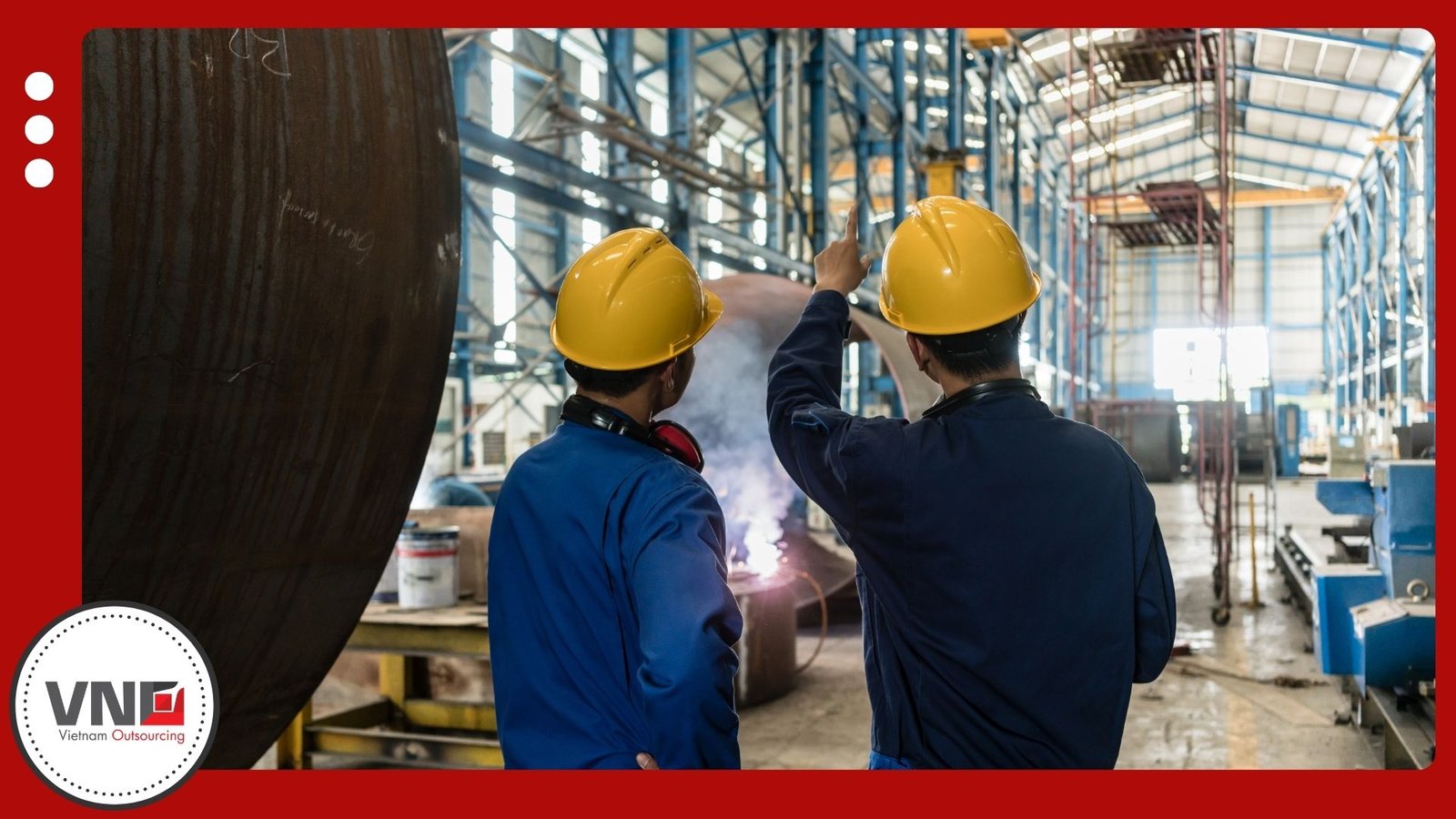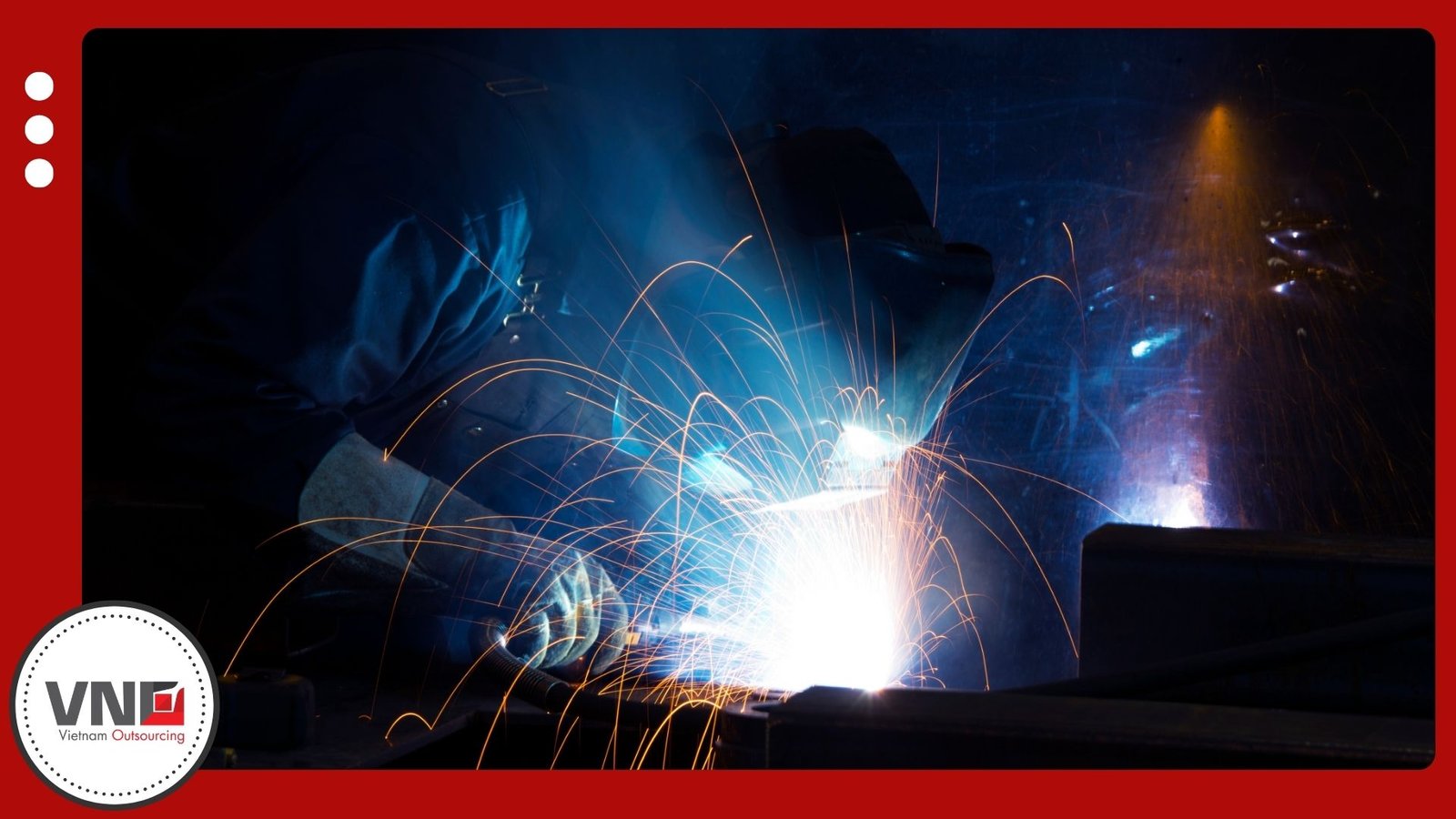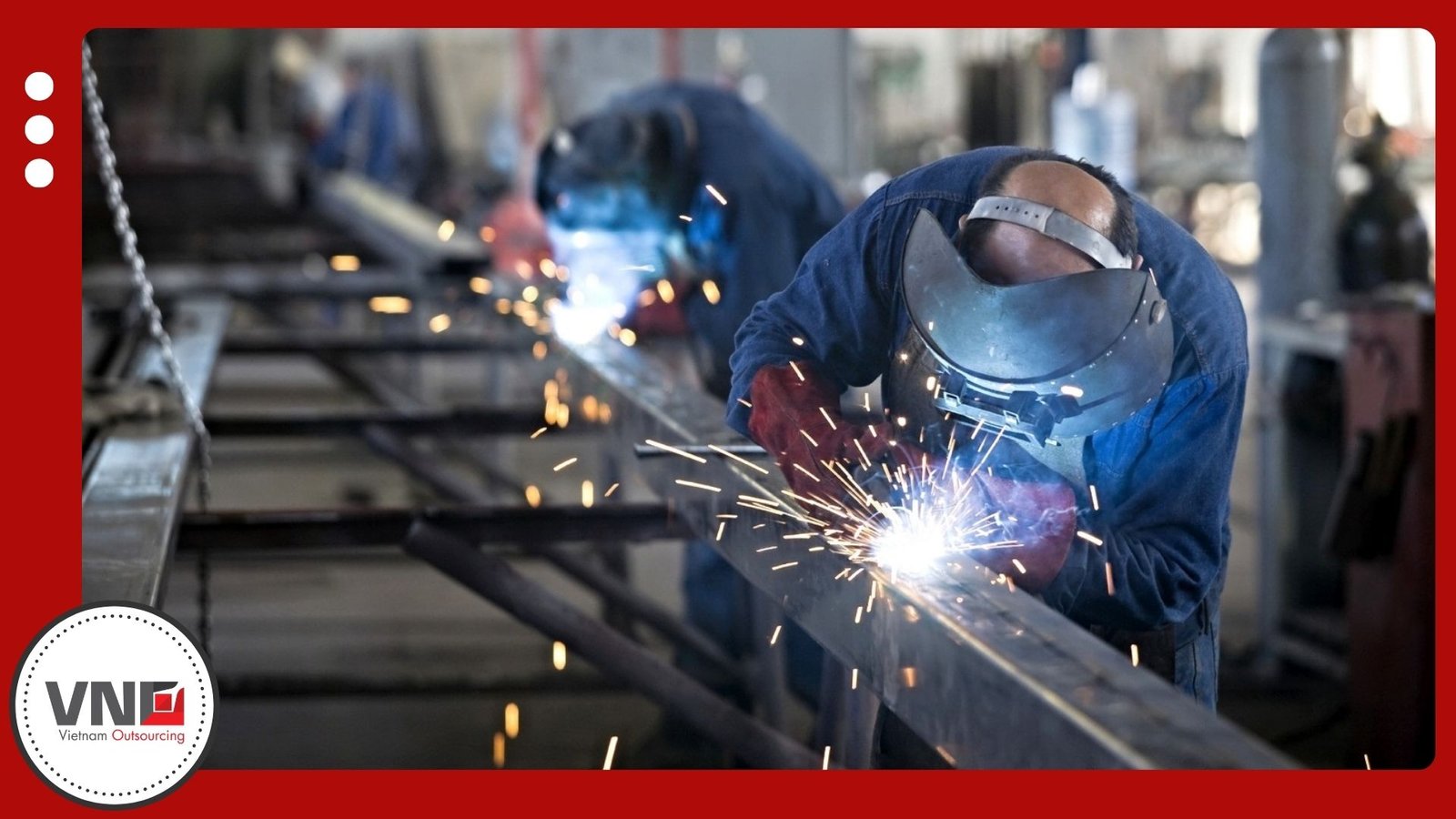Introduction
For decades, global companies have relied on Asia for manufacturing and fabrication. But the dynamics of supply chains are shifting. Rising metal fabrication costs in China, tariff pressures, and increasing demand for diversified sourcing are pushing buyers to explore new destinations. Vietnam metal fabrication has quickly become one of the most attractive alternatives. The country combines cost competitiveness, international quality standards, and strategic government support, making it a rising hub for outsourcing welded steel assemblies and heavy weldments.
The Push Factors Driving Change
The movement toward Vietnam is not happening in isolation. Several global factors are accelerating this shift:
- Tariffs on Chinese goods remain steep, often exceeding 50%, which erodes the cost advantage of sourcing from China.
- Rising wages in traditional markets such as China, India, and Mexico have narrowed the labor cost gap.
- Supply chain disruptions from the pandemic and geopolitical conflicts highlighted the risks of over-dependence on a single country.
- Global demand for compliance with environmental and labor standards has grown, and Vietnam is stepping up with stricter regulations and ESG adoption.
As a result, international companies are actively diversifying, and Vietnam is now a clear choice for those seeking both affordability and stability.

Why Vietnam is the Pull Destination
Competitive Costs with Quality Balance
Vietnam offers labor costs well below developed markets and still competitive with regional peers. Yet, unlike purely low-cost locations, Vietnamese suppliers have invested in skilled welders, engineers, and quality systems. This allows buyers to outsource metal fabrication without sacrificing durability or compliance.
Trade Agreements and Tariff Advantages
Vietnam’s participation in free trade agreements such as EVFTA and CPTPP provides buyers with tariff reductions when importing fabricated metal products. In the U.S., tariffs on Vietnamese fabricated steel were reduced from 46% to around 20%—a sharp contrast to the higher duties on Chinese exports. For American and European buyers, this makes Vietnam metal fabrication both cost-effective and secure.
Government Incentives and Industrial Zones
The government has prioritized heavy industry with corporate tax exemptions, streamlined licensing, and infrastructure investments. Export processing zones provide easy access to customs clearance, helping global buyers cut lead times and avoid bureaucratic delays.
Capabilities Attracting Global Buyers
What makes Vietnam truly competitive is not just price, but the breadth of services available:
- Welded steel assemblies for construction equipment, industrial machinery, and energy infrastructure.
- Heavy weldments such as frames, tanks, and pressure vessels for demanding industries.
- Sheet metal fabrication using CNC cutting, bending, and stamping.
- Surface treatments including galvanizing, powder coating, and protective finishes.
- Testing and certifications aligned with global standards, ensuring reliable export readiness.
This range allows global companies to outsource both high-volume orders and specialized custom projects with confidence.
Addressing Buyer Concerns
Quality Control
Buyers often worry about quality when outsourcing. In Vietnam, many suppliers operate under ISO and AWS welding certifications, with structured non-destructive testing procedures. By implementing weld procedure specifications and regular inspections, they deliver consistent quality on large-scale assemblies.
Lead Times and Logistics
Vietnam’s proximity to major shipping routes reduces delivery times to the U.S., Europe, and Asia-Pacific. Typical lead times for welded assemblies range from 4–8 weeks depending on order complexity, with logistics networks improving every year.
Compliance and Sustainability
Vietnam has tightened regulations on emissions, worker safety, and industrial waste. For global buyers under ESG commitments, this alignment makes Vietnam a safer choice than some markets where compliance is weaker.
The Strategic Advantage Over China
China remains the world’s largest manufacturing hub, but its competitiveness for fabrication is declining. High tariffs, rising wages, and tighter scrutiny on origin labeling are pushing buyers to diversify. Vietnam metal fabrication fills this gap by offering comparable technical capability at lower landed costs. For U.S. and EU companies, Vietnam is not just an alternative but a strategic partner in building resilient supply chains.
Future Outlook: Scaling with Technology
The next phase of growth will be driven by automation and digitalization. Robotics in welding, CNC programming, and IoT-enabled inspection are gradually being adopted in Vietnam. As global buyers demand higher precision and shorter cycles, local manufacturers are scaling their operations with advanced technology while retaining the cost advantage that makes them competitive.
Conclusion
The shift toward Vietnam metal fabrication is clear and accelerating. Cost savings, tariff advantages, government support, and skilled capabilities make Vietnam the new hub for global buyers seeking reliable welded steel assemblies and heavy weldments. Looking for a trusted partner in Vietnam metal fabrication? Outsource your welded steel assemblies and heavy weldments to Vietnam with confidence. Contact us today to discuss your project and discover how Vietnam can deliver cost savings, quality, and reliability for your supply chain.





